Renaming layers in After Effects is a common task that can take a lot of time, especially when there are many elements involved. In this tutorial, you will learn how to successfully integrate the previously created user interface as a panel into the After Effects interface. I will also show you how to add necessary functions to your script to significantly increase efficiency when renaming layers.
Key takeaways
- Integrate the user interface as a panel in After Effects.
- Add functions to rename layers efficiently.
- Customize designs and layouts within the panel.
Step-by-Step Guide
To correctly implement and design the panel in After Effects, here is a detailed guide:
1. Save and prepare the script
First, save the current script under the name "Layer Renamer". You can do this by opening the current script in your preferred text editor and saving it as a.jsx file in the desired folder.
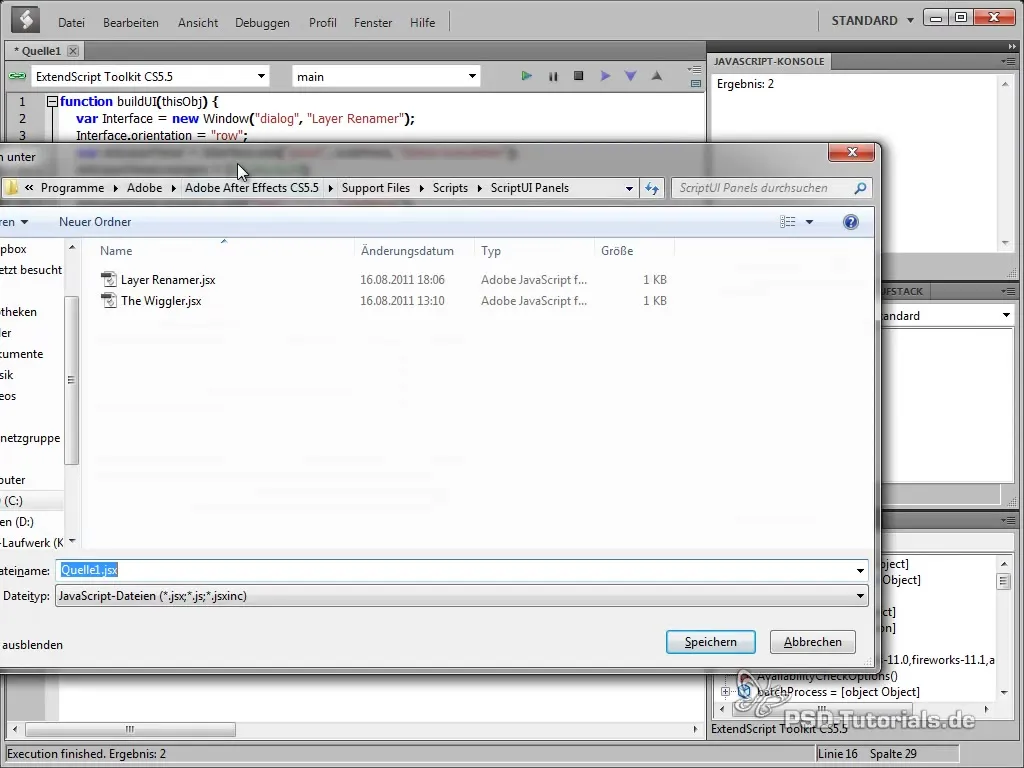
2. Create the folder for the script
If you have a version of After Effects older than CS3, you may need to create a Script UI folder. Make sure the folder is named correctly. It should be called "ScriptUI".
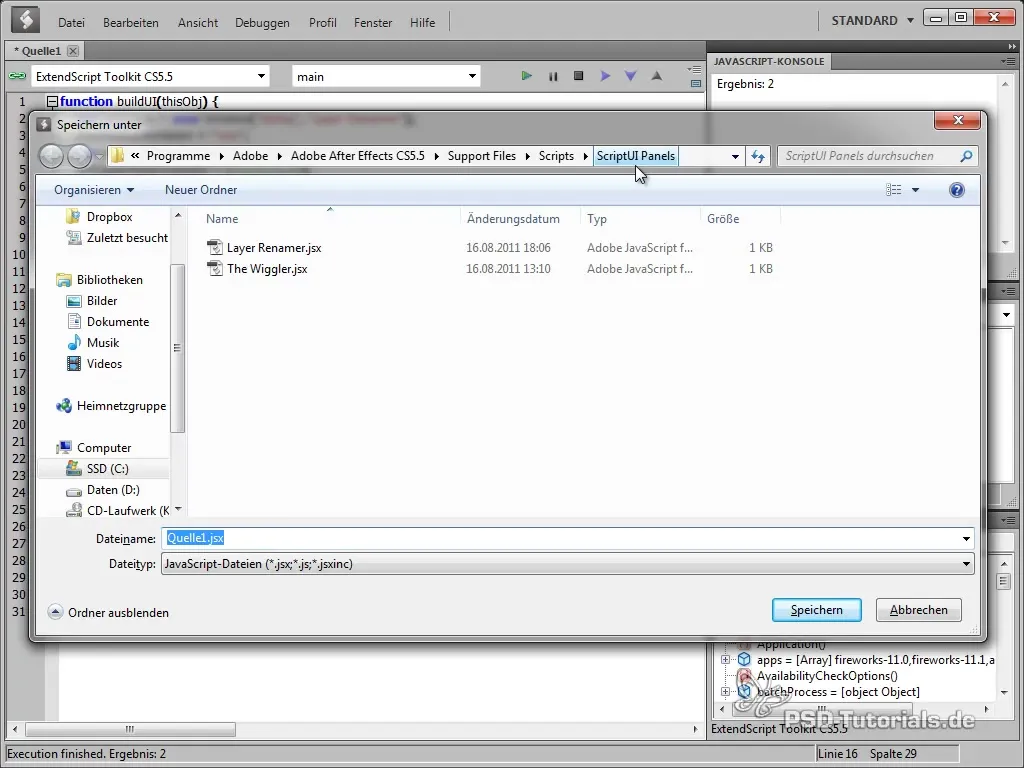
3. Restart After Effects
Restart After Effects so that the program recognizes the changes and can load the panel correctly. It is important not to forget this step to ensure the changes are implemented correctly.
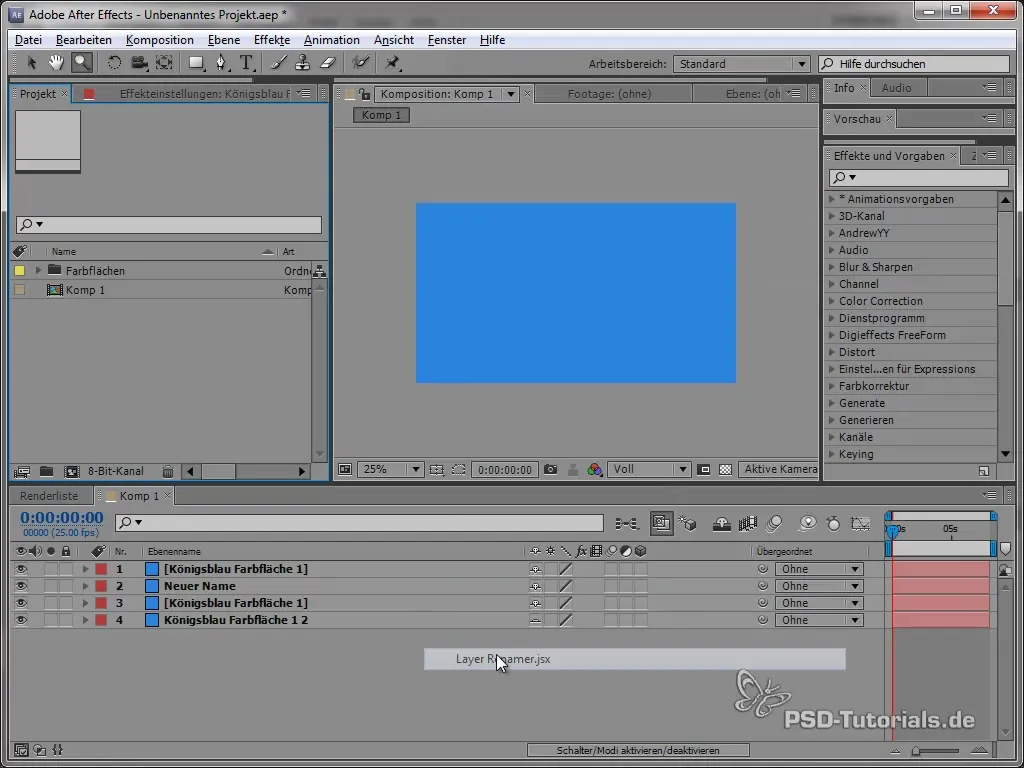
4. Create the panel object
Now you need to define the panel object. Insert an If statement in the script to ensure that the script loads as a panel. This prevents it from opening as a normal window, which is crucial for usability.
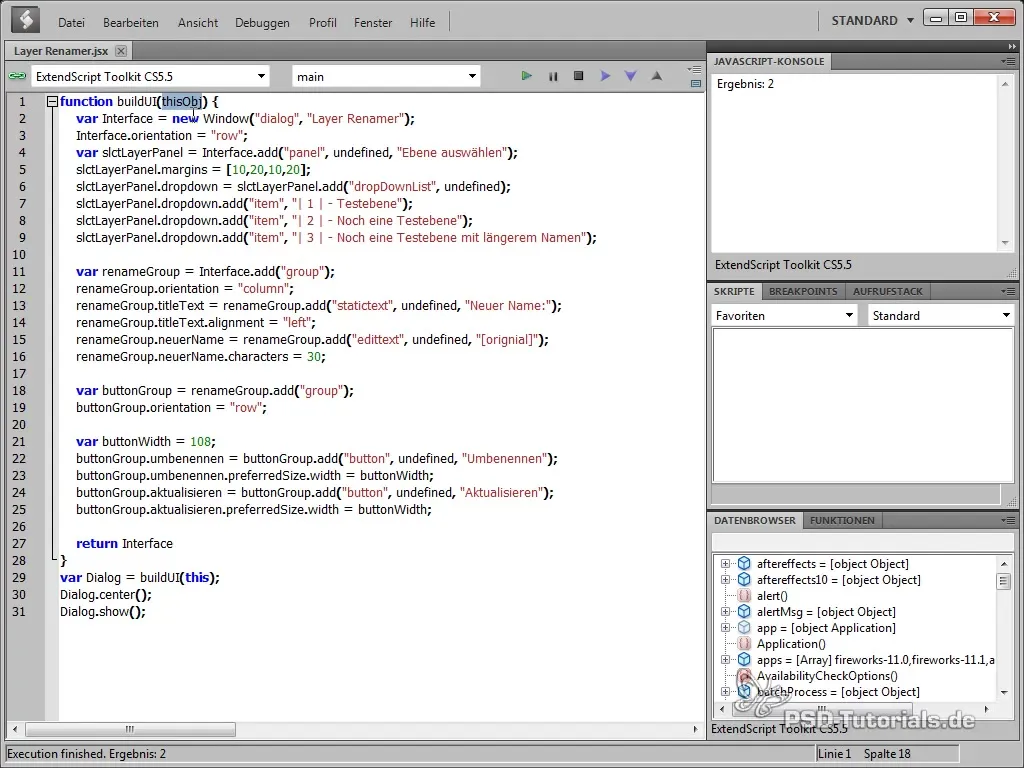
5. Adjust the layout
Since the layout in the panel should be dynamic, add code that correctly centers and adjusts the interface. This can be achieved by defining layout averages and configuring the panel to adapt to the size of the screen.
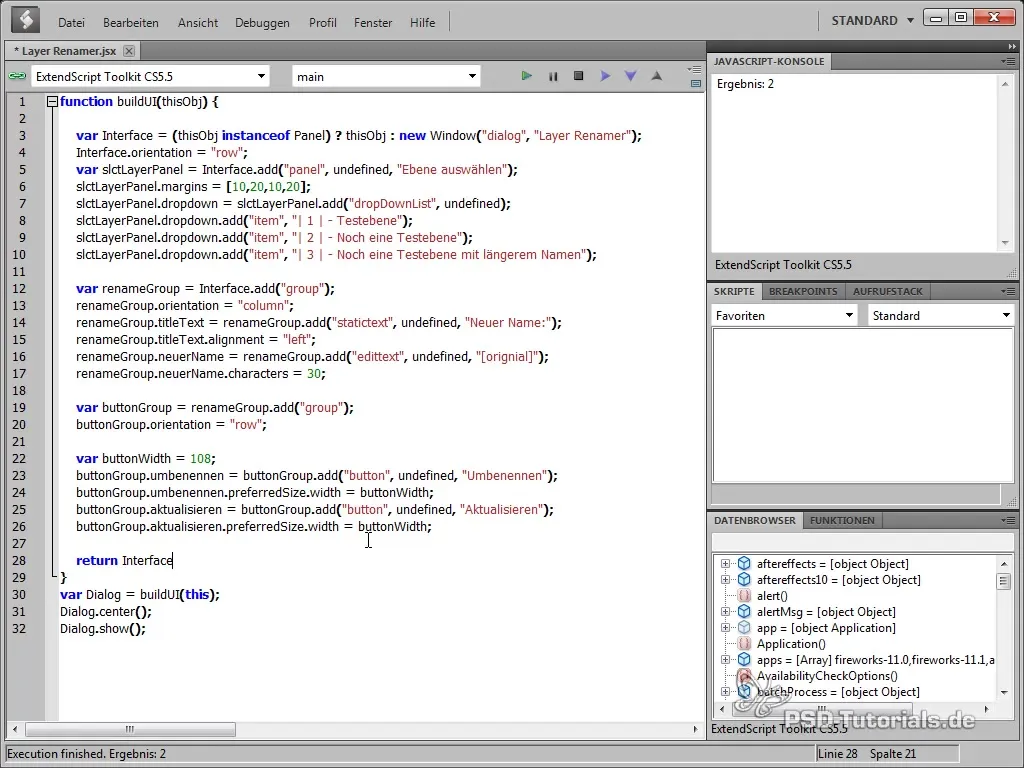
6. Set the background color of the panel
Now it’s time to assign an appealing background color to the panel. To do this, add a graphics area where you define the desired background color by setting the R, G, and B values that represent the desired color.
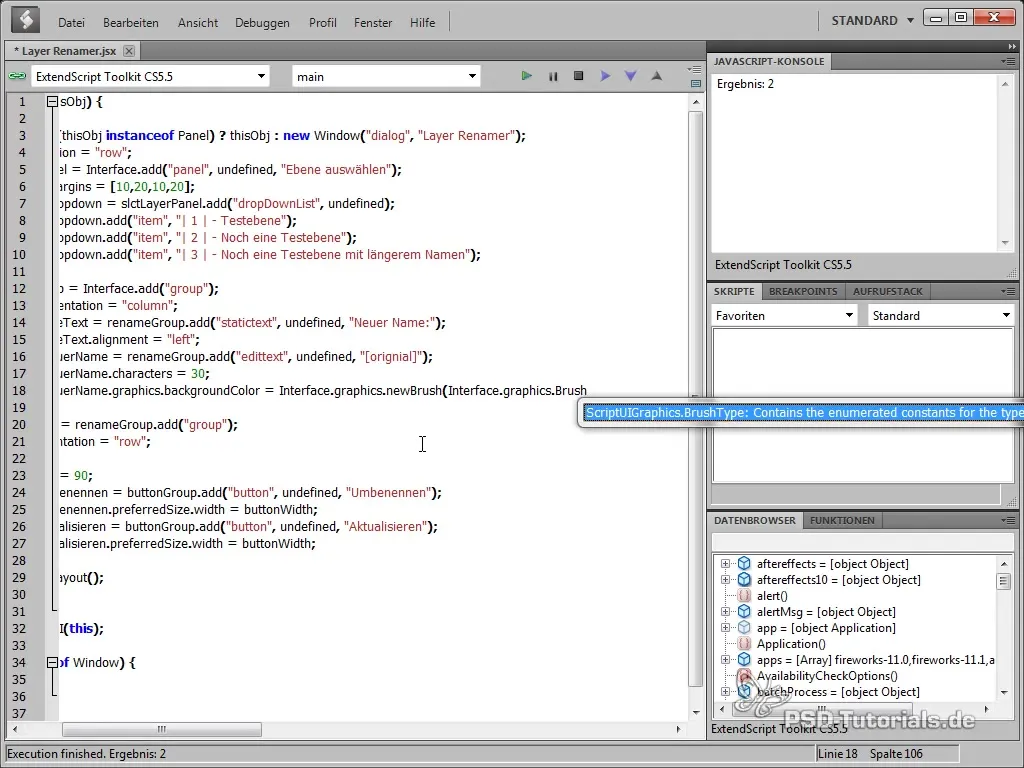
7. Function to create the layers list
Create a function that generates the current list of layers in the composition. Check if the active composition actually contains layers. If no layers are present, add a corresponding message to the list.
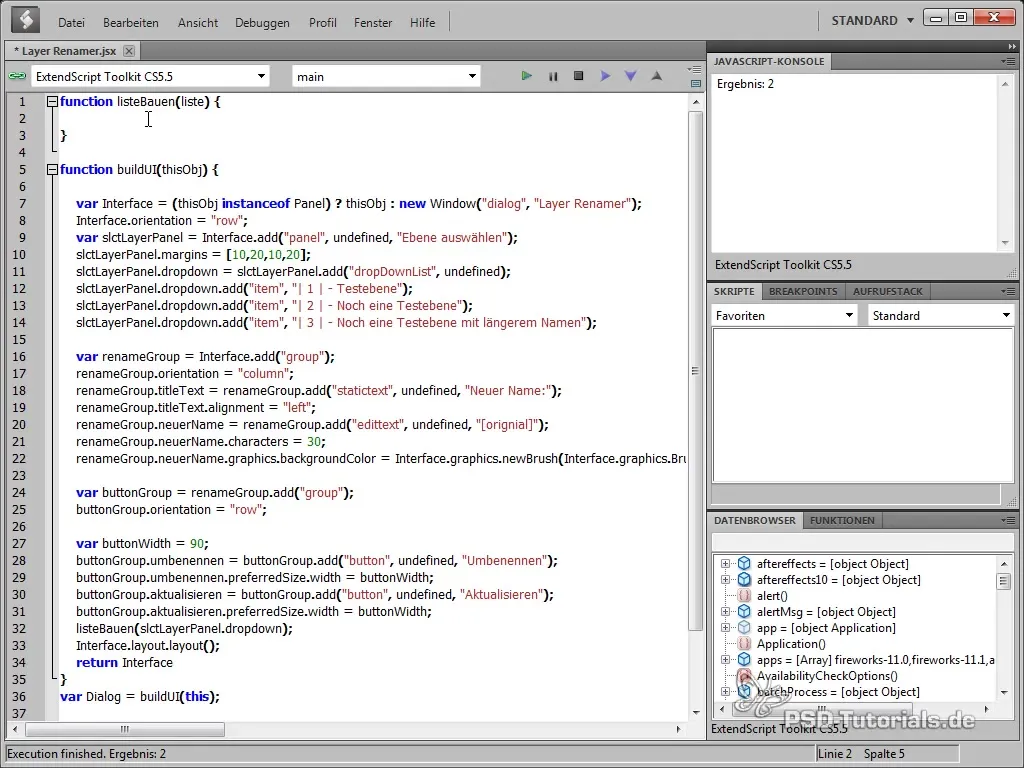
8. Update the layers list
Then add a function that automatically updates the list when the user clicks the "Update" button. This greatly improves the user experience by always displaying the latest layers.
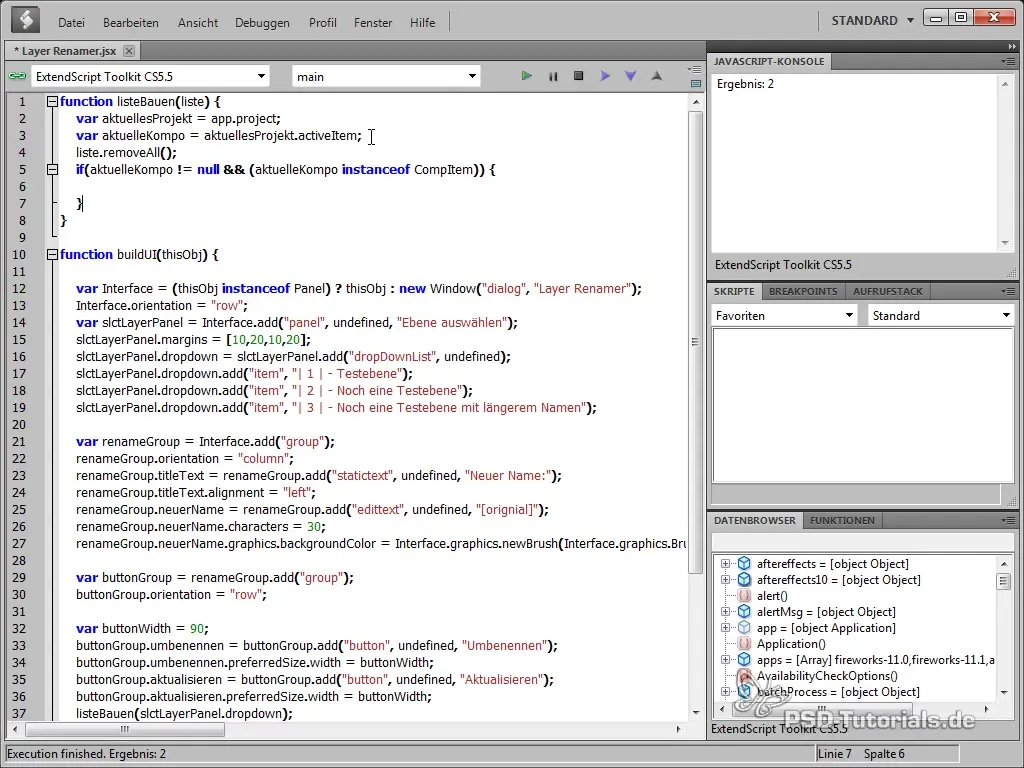
9. Implement renaming layers
Next, create a function that enables renaming the selected layer. Here you adjust the name that the user has entered in the input field. Make sure that the first layer is actually selected.
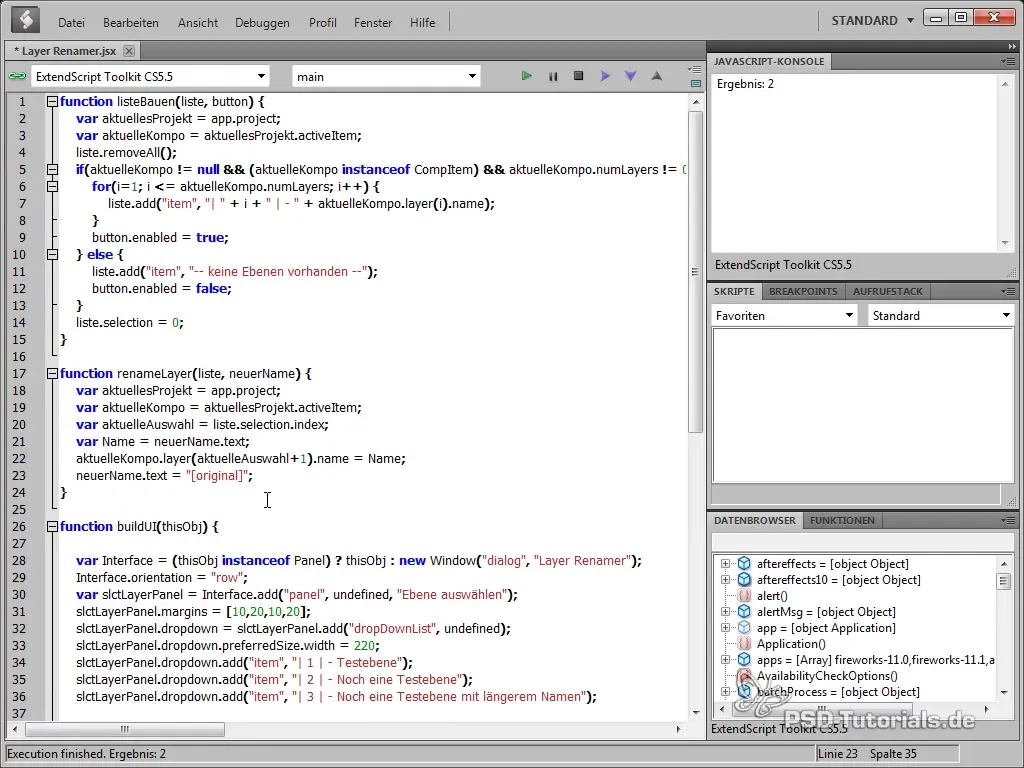
10. Activate and deactivate the buttons
To ensure smooth functionality, the buttons need to be activated or deactivated depending on whether there are layers present in the currently selected composition. This prevents users from executing functions that have no effect.
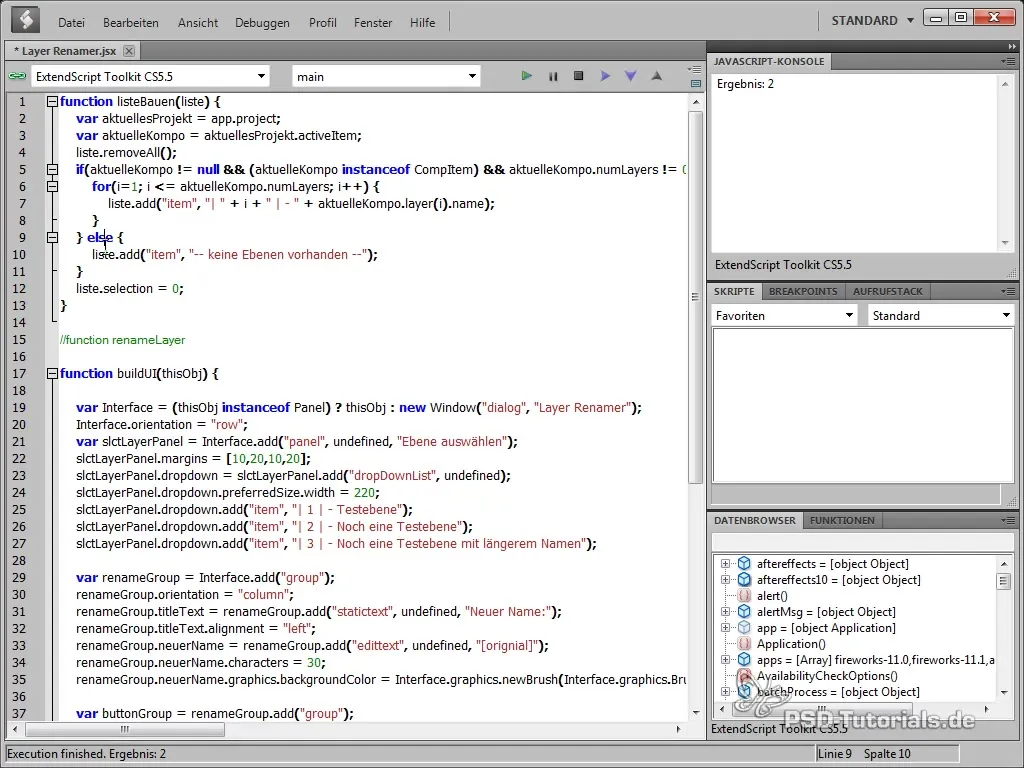
11. Create a button for renaming
Add a new button that is responsible for renaming the selected layer. This is one of the central functions of your panel. Configure the button to call the renaming function when clicked.
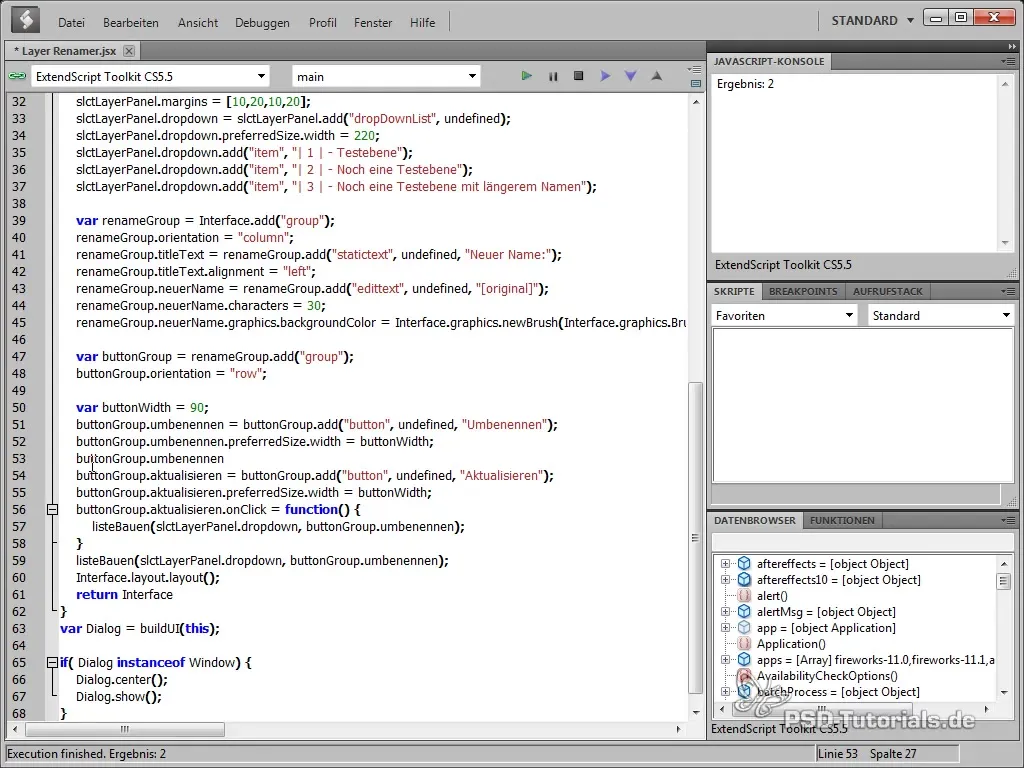
12. Test the panel
Before finalizing the script, test the panel in After Effects. Ensure that all functions work as intended, the design changes are visible, and the interactions run smoothly.
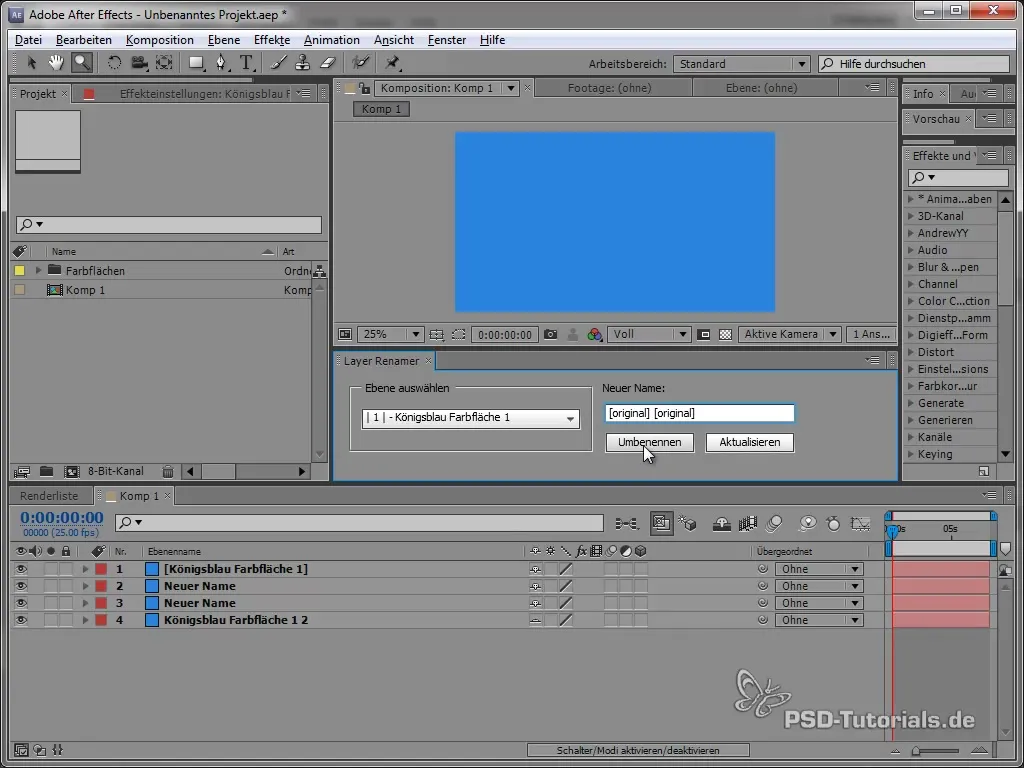
Summary – Layer Renamer in After Effects – Part 2: Panel and Functions
In this guide, you learned how to integrate a user interface in After Effects as a panel and add the necessary functions for renaming layers. By optimizing the script and adjusting the design, you can significantly improve the efficiency of your work.
Frequently Asked Questions
How can I ensure that my panel is loaded correctly?Make sure that After Effects is restarted after saving the script.
How do I add new functions to my panel?Use simple JavaScript functions and bind them to the corresponding button click events in your panel.
What do I do if there are no layers in the composition?The panel should display a message that no layers are present to inform the user.
How do I change the background color of my panel?Use the graphics commands in the script to set the RGB values for your panel's background color.


